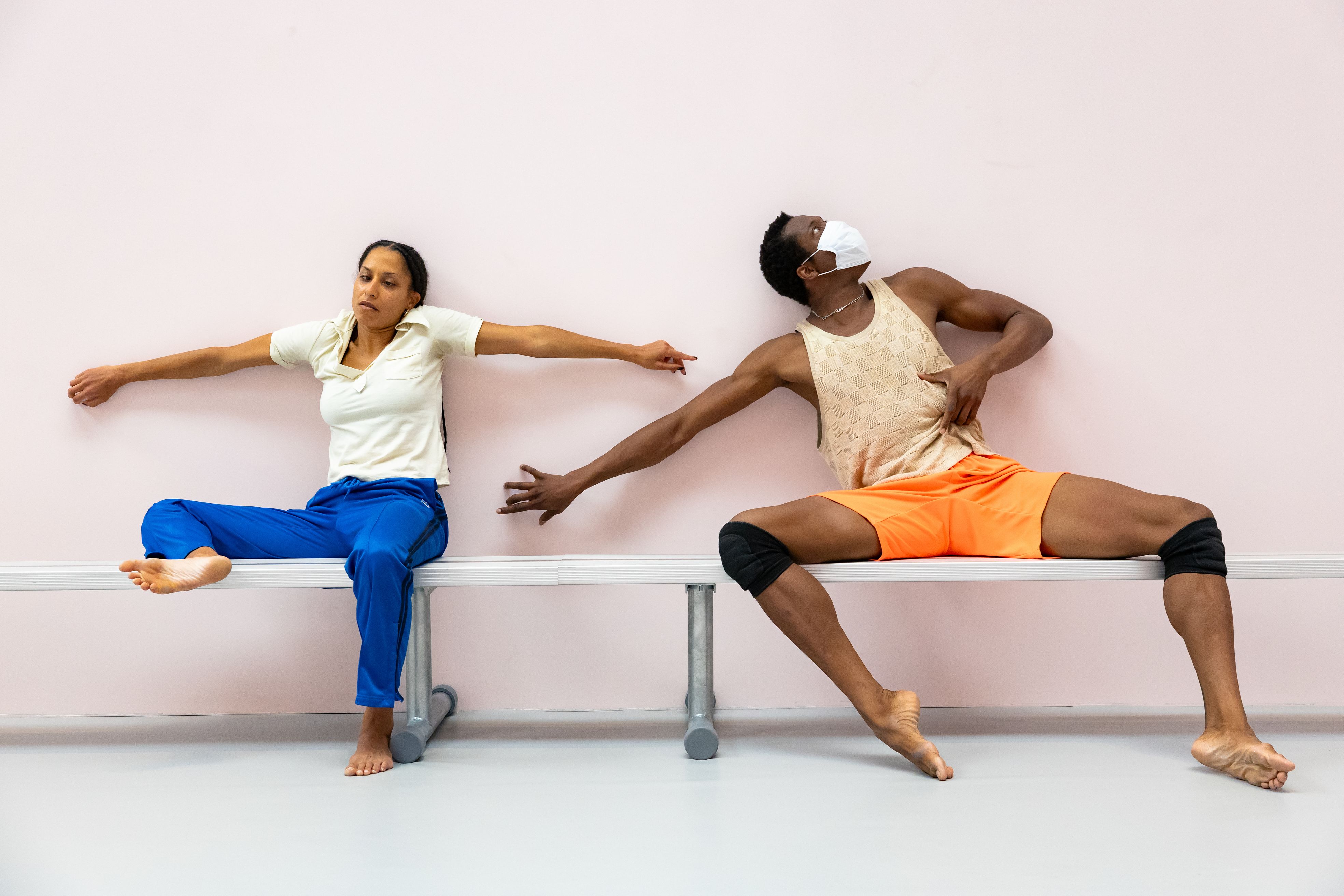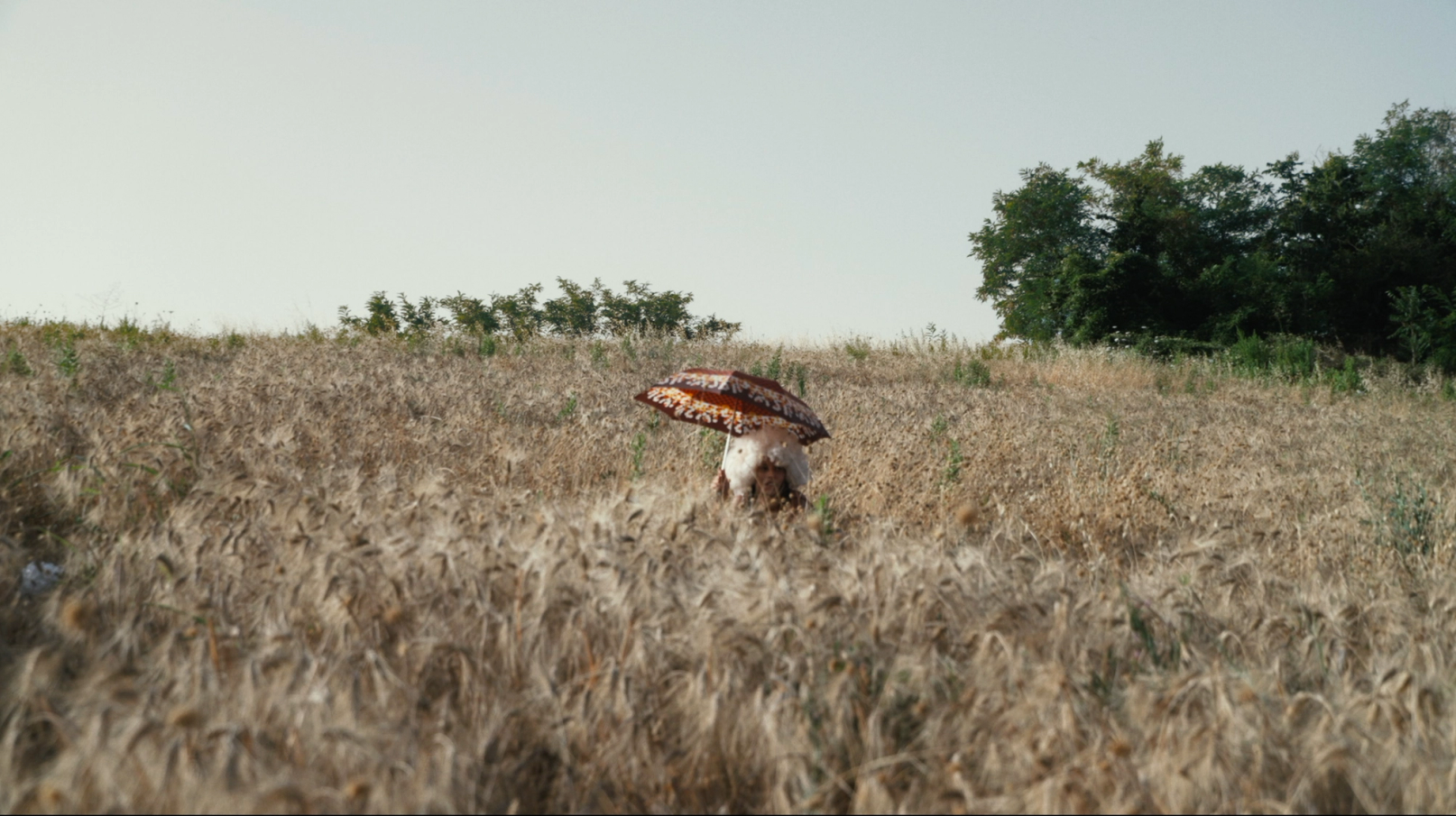
Seeing Me Seeing You
How does it feel to be inexperienced at the score?
In Ligia Lewis’s solo debut at CARA, spectatorship and caress volley between dancers and audience to reconfigure the grooves of racialized spatiality. The first time I witnessed study now steady, I sat cross-legged on the floor and all three dancers, stacked and wrapped into a single tangle, rolled themselves up to my bent knees. My watching seems to have ceased while this threshold was crossed. Being hailed and held, I was welcomed by way of this unexpected invocation on opening night.
Since I believe in magic and physics, I usually do not like to be touched by just anyone: it is something about the energy transferred, which transforms. But now brought in on the improvised ritual, at subsequent studies, I became giddy when the dancers’ movements went toward another member of the audience unprepared to withstand this intimacy. How does the pumping of blood and the smell of sweat feel near your body if it emanates from brown-skinned limbs?
The score begins with three dancers’ bodies standing or resting apart, at ease, and curious to explore the scope and shape of self. An anti-still life unfolds: by modeling a bending arm, then accentuating a curve in the ankle, or slightly twisting the neck—each body gently affirms the power of its living presence. Then, slowly, over the course of the study, individually animated movements reach out to find one another and the edges of space. Head, feet, and limbs triangulate with floor, walls, and windows, seemingly trying on/out the concept of strength without fear. The dancers’ bodies attract one another and begin to experiment with structures in space, building trust. Only later do we feel ourselves at the most vulnerable edge as the contours of audience members’ bodies seated at the perimeter are transformed into props of discovery.
Of course, there are different rules for touching or not touching different kinds of bodies and even more rules for covering (up) what goes unspoken. What are the rules of engagement when the terms of freedom are reversed? What are the rules for expressing or rejecting desire? Perhaps it is merely by way of custom, but white Americans can easily flip between upright puritanical sanctity and a shockingly haphazard way of reaching out to touch another. If you had known you might be rolled up on by Black sweat at an art show in the West Village, that IT might touch you and not simply perform art’s labor at a well-kept distance, would you still have come? Would you return? How does it feel to be inexperienced at the score?
Balanced and ready in their rotation of threes, the dancers seem to become characters who birth themselves anew by making impromptu prayers in the Temple of Tempo. The anatomical audacity to practice as if without surveillance takes form in the length of a breath, the heft of a slap. Lifted heads look up and keep looking back at you. Arms, legs, and hands hang, smack, crumple. A hip learns from an arm, all three are head-to-head, that ass up against this wall—everywhere may double as a site of entry and escape.
Each surface including all “personal space” of and in between seated audience members is stretched to create new regions of range. Over my weeks of returning to study now steady, it stopped occurring to me to look for signs of fatigue. None came. Instead, I wondered how it feels as a professional Black dancer to know that one must continue, for the sake of self-preservation in the United States, returning to those other violent expectations of constrained conduct. I better understand now why I am a two-second subway platform dancer.
Discomfort and freedom in the performance of study now steady are purposely held together, playing on a loop. Over time and not only due to the commingling of continents across rapacious centuries, a wave of hues will spread across the color line at the BLACK BACK SALE. Spectatorship as sport, means guessing whose hues are whose. The practice on loop might also be called endurance—that endless energy to climb over walls already climbed by your granny and her granny. Lucky for us ghosts do not die so easily.
The experience of intolerable discomfort rearranges the shape of time; even a few seconds can feel weighted, like a loaded weapon. Down the way, a voice calls out to us from the gallery screening A Plot, A Scandal: SEVENTEENTH CENTURY… Someone in the audience of the study takes up their bodily right to leave. Remember every single limb left must come with us; each finger wag, neck roll, ten toes down to cozy up to capital and kiss your teeth. Knuckle knocking against wall, love on the radiator, bum rush the bench: decisions have consequences. Toward the end of the study, the voice of the congregated begin a fugue. Hearing the words chanted by the dancers—“Seeing you seeing me”—reverses the target of discomfort. How much can you trust the ancestors that guided you to become a witness today?
Across her choreography, I feel Ligia thinking something like this: Even if only with fingers, a fissure may be figured. (I am fine being left to my own devices since even cracking up is still a study in style for us.) Respectably, I would not mind swinging my arms like an ape if I felt like it. Imagine the joy of participating in public, stimming for as long as it takes, until my own comfort in the street exceeds the threat of judgment/permission to exist at all. Get me out of here.
Another study will follow. Each time I attend, seated back in the familiar pink room, I breathe a sigh of relief knowing that Ligia’s practice now exists by way of being rubbed into these walls. My only hope is that her scores will keep playing, seeping deeply into the foundation of the architecture of our freedom.
Darla Migan, PhD, is a philosopher of aesthetics. She has contributed numerous gallery essays on artists hailing from Kampala to São Paulo, and published articles on solo exhibitions by Faith Ringgold, Abigail DeVille, Tau Lewis, Julie Mehretu, Wangechi Mutu, Akeem Smith, and Stacy Lynn Waddell. Since completing her dissertation on the Harlemite Dr. Adrian Margaret Smith Piper, her research has expanded to include the shifting conditions of global art markets. She is an alumnus of the Independent Study Program at the Whitney Museum of American Art, a recipient of the Dorothea and Leo Rabkin Prize for her work as an arts journalist, a recipient of an Andy Warhol Arts Writers Grant, and a recent ArtTable Fellow at the Morgan Library & Museum. Dr. Migan teaches the online course “Philosophy for Artists” and is a Lecturer at The New School for Social Research.

